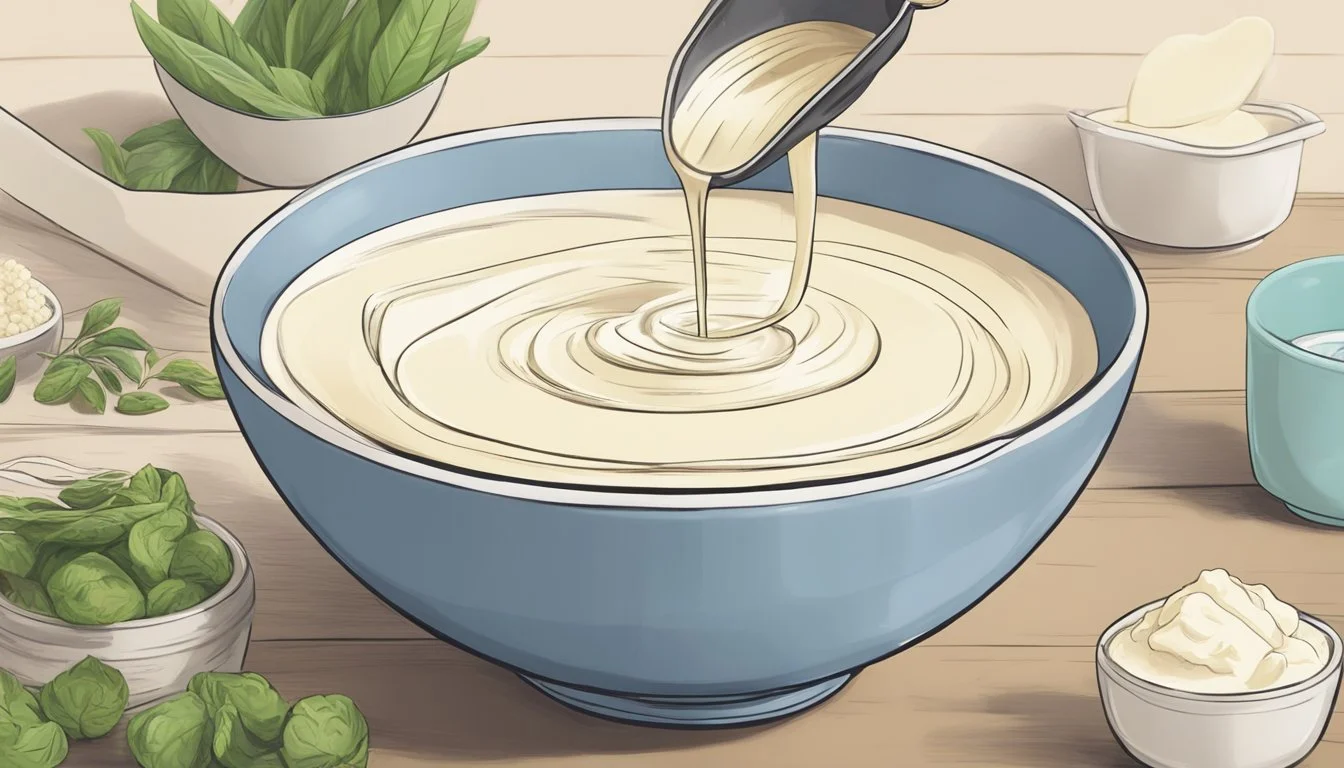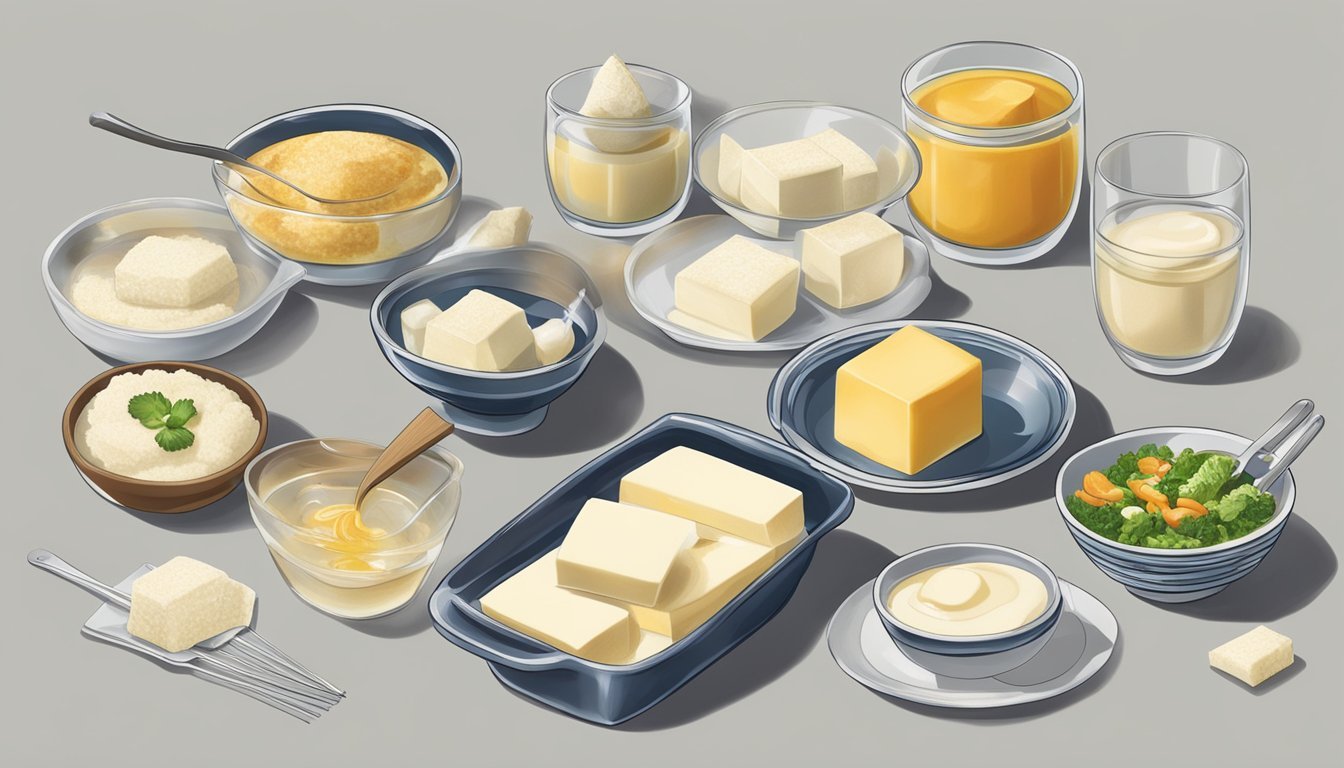How to Substitute Silken Tofu for Cream
A Healthy Alternative Guide
Silken tofu is a versatile plant-based ingredient commonly used in vegan and dairy-free cooking. It is derived from soybeans and has a smooth, creamy texture that makes it an excellent substitute for cream (how long does cream last?). Thanks to its high water content and soft consistency, it can be effortlessly blended into a variety of dishes to mimic the rich mouthfeel that cream typically provides. As more individuals seek alternatives to dairy products, silken tofu emerges as a suitable option for those looking to maintain a similar culinary experience without the use of animal products.
When integrating silken tofu into recipes as a cream substitute, one can expect it to perform well in sauces, soups, curries, and desserts. The key to a successful substitution lies in proper preparation; blending silken tofu until it is completely smooth ensures that it can seamlessly replace cream in a one-to-one ratio. This characteristic allows it to infuse dishes with a creamy element while also providing the added benefits of being lower in fat and higher in protein compared to traditional cream. Additionally, its neutral taste means it can adopt the flavors of other recipe components, making it highly adaptable to a broad range of culinary applications.
Understanding Silken Tofu
When considering silken tofu as a cream substitute, it is important to recognize its unique texture and high water content, which make it versatile in vegan and dairy-free cooking.
Properties of Silken Tofu
Silken tofu, derived from soybeans, is known for its jelly-like consistency and creamy texture due to a high water content. It is less dense and firm compared to regular tofu, with a structure that allows it to blend smoothly into recipes. This type of tofu contains a balance of protein, fat, and a variety of minerals, such as calcium, iron, and potassium, contributing to its nutritional profile.
Texture: Semi-solid, similar to jelly, blends seamlessly Protein: Sufficient amount for nutritional needs Water: High content, influences creamy consistency Fat: Lower in fat compared to dairy products Minerals: Good source of calcium, iron, and potassium
Benefits in Vegan and Dairy-Free Diets
For individuals following vegan or dairy-free diets, silken tofu presents a healthful and versatile non-dairy alternative to replace cream in cooking and baking. It is naturally lactose-free, making it suitable for those with lactose intolerance or dairy allergies. Due to the bland flavor of silken tofu, it easily adopts the taste of accompanying ingredients, enhancing dishes without the addition of dairy.
Vegan: Ideal for plant-based diets, replacing animal-derived cream
Dairy-Free: Suitable for lactose intolerance and dairy allergies
Nutrient-Rich: Offers protein and essential minerals without dairy
Cooking Versatility: Can be used in sauces, soups, and desserts, retaining a creamy texture without dairy
Preparing for the Substitution
When substituting silken tofu for cream, selecting the appropriate type and preparing it correctly is crucial to achieve the desired creamy consistency without altering the taste or structure of your dish.
Selecting the Right Type of Silken Tofu
It is essential to choose silken tofu for its creamy texture that closely resembles that of cream. Tofu comes in a variety of firmness levels, and for cream substitution, the softest form, which is silken, works best. Avoid using firm or extra-firm tofu as these varieties do not blend as smoothly and can result in a gritty texture.
Draining and Pressing Silken Tofu
Once the correct type of silken tofu is selected, it must be properly drained to remove excess moisture. The tofu should be taken out of its package and any visible water should be gently poured away. To press the tofu, place it on a plate lined with paper towels or a clean kitchen towel, cover it with more towels, and set a light weight on top. Allow the tofu to sit and drain in the refrigerator for at least 15 minutes. This can help achieve a consistency that is closer to that of the traditional dairy cream. After pressing, the tofu should be ready to be pureed until smooth, achieving a cream-like texture. It can be stored in an airtight container if not used immediately.
Using Silken Tofu in Recipes
Incorporating silken tofu as a cream substitute in recipes leads to a versatile range of textures suitable for both savory and sweet dishes. Here are the techniques to do it right.
Creating Creamy Textures
When one uses silken tofu as a heavy cream substitute, it is essential to achieve a creamy and smooth texture akin to actual cream. For sauces, soups, and dips, tofu blends seamlessly into the mix without affecting the desired consistency. Chefs often recommend silken tofu for desserts such as puddings and cakes where a moist, rich texture is key. To ensure a thick consistency in dressings and frostings, one may need to reduce the liquid content elsewhere in the recipe.
Adjustments for Sweet and Savory Dishes
For sweet dishes like smoothies or desserts, a bit of sweetener can complement the bland taste of tofu, enhancing the final flavor. In contrast, savory dishes might require additional seasonings or spices to elevate the dish's taste profile. A chef should consider the characteristics of the recipe and make adjustments to seasonings and spices, ensuring that tofu's neutral taste does not dilute the intended flavors of the dish.
Blending Techniques for Smooth Consistency
The success of using silken tofu as a substitute heavily relies on proper blending techniques to avoid a grainy or chunky texture. Using a high-speed blender or food processor is effective for creating a puree that is completely smooth. An immersion blender can be a convenient tool as well, particularly for blending directly into a pot or bowl. It's critical that the tofu is thoroughly blended until the texture is uniform and resembles that of liquid cream.
Substitution Ratios and Considerations
In this section, the reader will learn precise ratios for substituting silken tofu in place of cream and how to adjust the flavor to match the desired outcome.
Silken Tofu to Cream Ratios
For heavy cream, an equivalent amount of blended silken tofu can be used. One cup of puréed silken tofu substitutes for one cup of heavy cream. For sour cream, blend silken tofu until smooth with a touch of vinegar or lemon juice to match the tanginess of sour cream typically used. A ratio of one tablespoon of lemon juice or vinegar per cup of silken tofu can successfully mimic sour cream in dips and recipes. In recipes calling for whipped cream, chilled, drained silken tofu blended with a small amount of sugar, vanilla extract, or maple syrup can serve as a lower-fat, vegan alternative — though it won't offer the same fluffiness.
Flavor Adjustments and Enhancers
Flavor adjustments are essential to ensure that the tofu blends seamlessly into the recipe. Adding sugar or maple syrup will provide sweetness, typically needed if the silken tofu is substituting cream in desserts. A small pinch of salt can enhance the flavors in savory dishes. To replicate a cheesy taste without dairy, a sprinkle of nutritional yeast can work well. Vanilla extract can be vital for sweet recipes to provide depth. In certain dishes, a small amount of olive oil might be added to bring back some of the richness lost by omitting cream. For a more complex flavor in savory recipes, a touch of miso or seasoning might be required to make the dish shine.
Alternative Non-Dairy Substitutes
When considering non-dairy substitutes for cream, several options are available which cater to different taste profiles and cooking requirements.
Comparing Other Plant-Based Milks
Plant-based milks offer different flavors and consistencies for those looking to replace cream. Here is a brief comparison:
Soy Milk: It is relatively neutral in taste and closely mimics the creaminess of dairy milk when thickened with oils or starches.
Almond Milk: It’s less creamy than soy but provides a nutty flavor, often used in sweet and savory dishes.
Oat Milk: Oat milk has a natural sweetness and richness, making it a good candidate for desserts and coffee.
Coconut Milk: Coconut milk can be quite rich and imparts a distinct coconut flavor, which may be overpowering in some dishes.
Nuts and Nut-Based Creams
Nut-based creams are another popular substitute and can be made by blending nuts with water. For example:
Cashew Cream: Made by blending soaked cashews with water, it has a rich and creamy texture ideal for sauces and soups.
Commercial Nut Creams: These are available and blend various nuts for a ready-to-use cream substitute.
Commercial Vegan Cream Alternatives
For convenience, several commercial vegan cream alternatives are available on the market. They include:
Coconut Cream: Thicker and richer than coconut milk, this is a good choice for desserts or dishes where a thicker consistency is needed.
Vegan Heavy Cream Substitutes: These products are designed to replicate the thickness and richness of heavy cream and are often soy or coconut-based.
It's important to note that while these alternatives can substitute for cream in recipes, they each bring their unique characteristics and may alter the flavor slightly. It is often a matter of personal preference and dietary needs when choosing the best non-dairy substitute for cream.
Nutritional Considerations
When substituting silken tofu for cream, one should consider the nutritional differences that this swap entails, especially the variations in calorie and fat content, the protein and mineral makeup, and the overall implications for one's health and diet.
Calories and Fat Content Comparison
Silken Tofu: Typically lower in calories and fat than cream.
Calories: About 55 per 100g
Fat: Around 3g per 100g
Cream: Higher in calories and fat content, contributing to richer taste.
Calories: Roughly 345 per 100g (heavy cream)
Fat: Approximately 37g per 100g (heavy cream)
Protein and Mineral Content
Silken Tofu: Offers more protein than cream and contains valuable minerals.
Protein: About 5 to 6g per 100g
Minerals: Includes calcium and iron
Cream: Generally lacks the protein content present in silken tofu.
Protein: Usually less than 3g per 100g
Minerals: Fewer minerals compared to tofu
Implications for Health and Diet
Silken Tofu: A dairy-free alternative beneficial for individuals following a vegan diet or those seeking less fat and cholesterol in their diet.
Cholesterol: None, making it heart-healthier.
Cream: Could be high in cholesterol and saturated fats, which might not align with certain dietary goals.
Cholesterol: Present, varying depending on the type of cream.
Dietary Consideration: May be unsuitable for those on stricter fat or cholesterol-restricted diets.
Practical Tips and Tricks
In substituting silken tofu for cream, one must ensure proper storage, understand how to address texture inconsistencies, and use it creatively in various dishes for both sweet and savory applications.
Storing and Preserving Silken Tofu
To maintain the freshness of silken tofu before its use as a cream substitute, it should be stored in the refrigerator. Ideally, any unused portions are kept in an airtight container and submerged in water, which should be changed daily. This process helps preserve the tofu's texture and prevent it from drying out or absorbing unwanted flavors from the refrigerator.
Troubleshooting Texture Issues
When using silken tofu as a cream substitute, achieving the right texture is crucial. If a cook encounters a mixture that's too watery, they can try whipping the tofu to incorporate air and improve fluffiness. To ensure a glossy and smooth texture in savory dishes or sweet recipes like a chocolate mousse, silken tofu should be pureed thoroughly until it's completely smooth, without any lumps.
Creative Uses in Culinary Practices
Silken tofu is incredibly versatile in the kitchen, making it suitable for a wide range of dishes. Chefs in restaurants and home cooks alike can utilize it for its creamy consistency in savory dishes like curries or to create a delicious and cheesy texture in dairy-free alternatives. In sweet recipes, pureed tofu adds moisture and a subtle richness that can enhance the flavor profile without overwhelming other ingredients.
Silken Tofu in Different Cuisines
Silken tofu, with its soft and creamy texture, has become quite versatile in various cuisines, offering a healthy alternative for cream in both traditional Asian dishes and innovative Western cooking, as well as in fusion recipes.
Asian-Influenced Dishes
In Asian cuisine, silken tofu is a staple, particularly in Chinese, Japanese, and Korean dishes. It is commonly used in soup, as in the delicate Japanese Miso Soup, which often includes cubes of silken tofu as a primary ingredient. The product absorbs flavors like soy sauce, garlic, and celery, making it a perfect complement to the rich broths typical of the region. It's not uncommon to find it blended into tofu sour cream or used in desserts where it's mixed with cocoa powder for a dairy-free chocolate treat.
Integrating into Western Cooking
Western cooks have adopted silken tofu as a dairy substitute, particularly in vegan cooking. One can find it in blended sauces, such as a silken tofu-based pesto, which provides the creamy texture without the need for cheese or cream. In Italian cuisine, creamy pasta sauces can be revolutionized with silken tofu, making dishes like Alfredo or Carbonara accessible to those who avoid dairy. Brands like Mori-Nu offer shelf-stable silken tofu, which is convenient for long-term storage and sudden culinary inspirations.
Fusion Cooking with Tofu
Fusion cuisine often takes the best of two worlds and creates something novel. Silken tofu's adaptability makes it an excellent candidate for such experiments. Chefs might blend silken tofu with traditional spices to create a creamy curry that marries the richness of Indian cooking with the health benefits of bean curd. It can also serve as the base for a dairy-free chocolate mousse, delicately taking on the flavor of the cocoa powder while maintaining a smooth texture. Silken tofu allows for a myriad of culinary adventures that can satisfy palates across cultures.
Conclusion
When seeking a vegan or dairy-free alternative for traditional cream in recipes, silken tofu stands out as an exceptional option. The neutral flavor and creamy texture of silken tofu make it versatile, allowing it to absorb and enhance the flavors of other ingredients. For those with dietary restrictions or health concerns, silken tofu provides a nutritious substitute that is lower in fat and cholesterol.
Applications:
Sauces and Soups: Silken tofu pureed until smooth seamlessly integrates into savory dishes.
Desserts: Its ability to mimic the consistency of cream makes it a key ingredient for dairy-free pastry creams and cheesecakes.
Ratios:
Substitute equal parts of pureed silken tofu for cream in recipes.
By incorporating silken tofu into one's culinary repertoire, chefs and home cooks can maintain the essence and mouthfeel of traditional cream-filled dishes while adhering to vegan and non-dairy guidelines. It is not just a compromise, but rather a wholesome addition that enhances the nutritional profile without sacrificing taste or texture.
Utilizing silken tofu as a heavy cream substitute is a simple, effective way to create inclusive meals that cater to diverse dietary preferences, ensuring everyone can enjoy a wide range of flavorful, creamy dishes.







